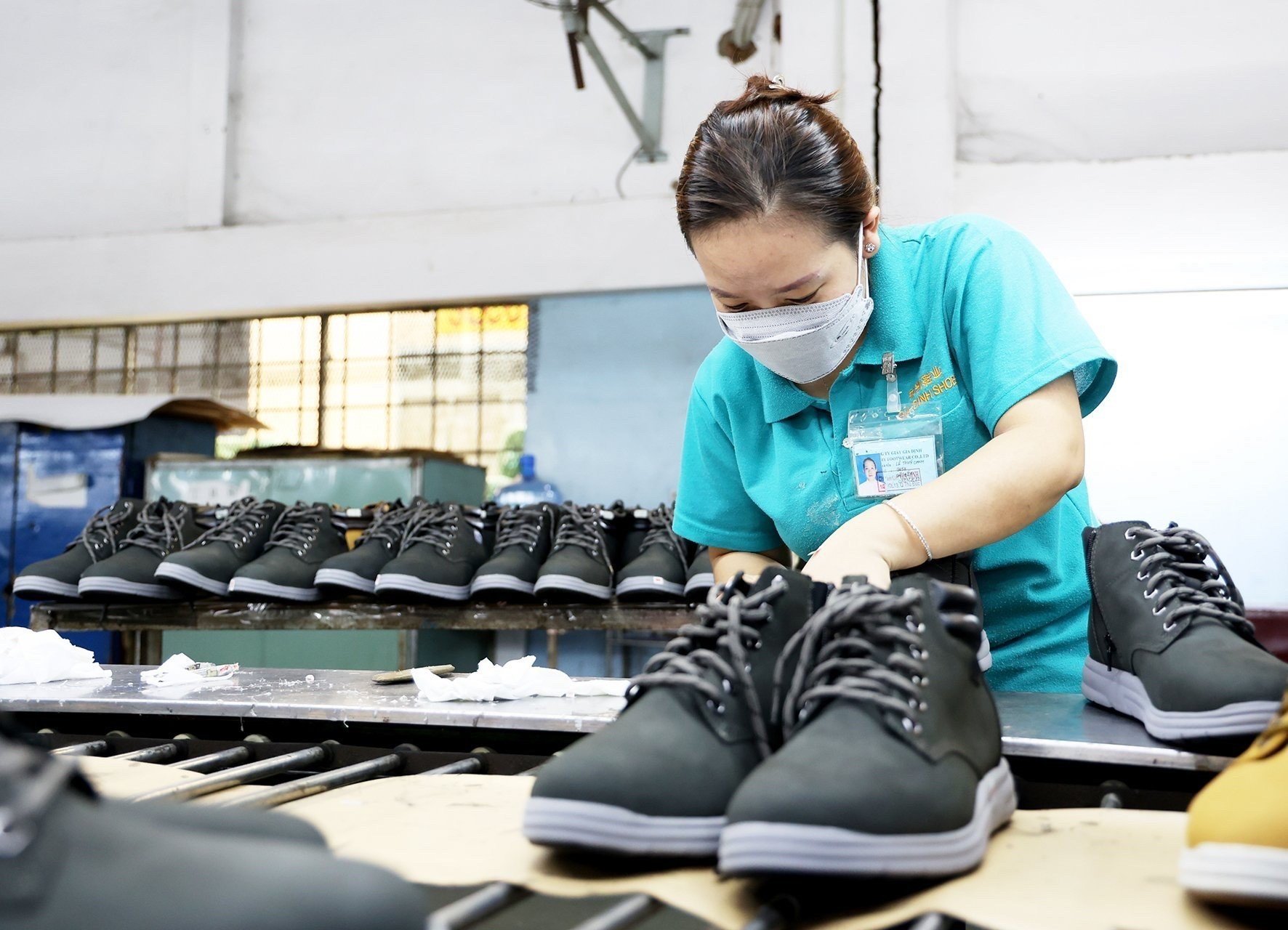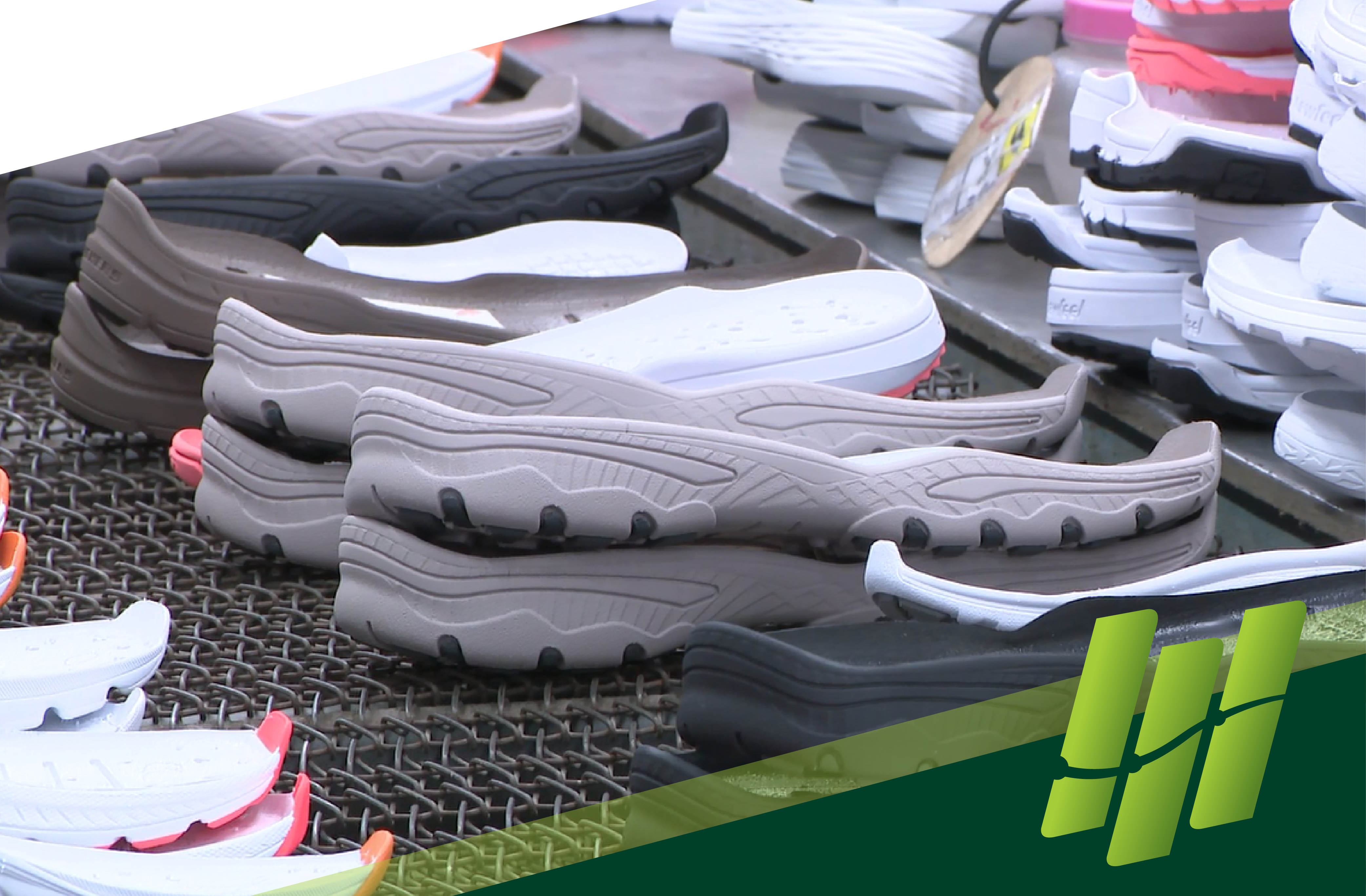
Vietnam's leather and footwear industry is facing an imperative shift towards green production and sustainable development, according to local insiders.
| A worker finishes making a shoe at the Gia Dinh Group JSC factory. Photo: Gia Dinh Group JSC |
Compliance with sustainability regulations
According to the Vietnam Leather, Footwear and Handbag Association (LEFASO), the transition to green production for sustainable development is not only a general trend, but also a mandatory requirement for the business community, especially for the leather and footwear industry.
"This shift represents both an opportunity and a challenge for Vietnamese leather and footwear companies to enhance their brand value and competitiveness in the international market," the association said.
Vice Chairwoman and Secretary General of the LEFASO Phan Thi Thanh Xuan said that the industry is facing many great challenges.
She explained that in the past, sustainable development activities were primarily customer-driven and voluntary in nature. However, these have now been formalized through government policies in key footwear importing countries.
A case in point, says Xuan, is the European Union (EU), which has introduced a number of new policies relating to eco-products, extended producer responsibility, supply chain traceability, recycling and, most importantly, the requirement to reduce carbon emissions.
"All these regulations are aimed at improving quality and facilitating a circular economy in the industry. However, these policies affect the entire supply chain and pose a significant challenge for manufacturers, including in Vietnam," she pointed out.
While Vietnam's leather and footwear industry enjoys advantages such as the presence of major global manufacturers in the country and a network of free trade agreements, it also faces stiff competition from rivals such as Indonesia, which enjoys more favorable US import tariffs than Vietnam, said Maxime Rogeon, Head of Footwear at Decathlon Vietnam.
Rogeon said Vietnam needs to strengthen green logistics solutions and improve its supply chain and transportation to quickly adapt to this trend.
Gerwin Leppink, an expert from the Worldwide Responsible Accredited Production (WRAP), emphasized that compliance with customs, environmental, and social responsibility regulations is mandatory for successful exports to the US and the European Union.
"This affects both the buyer (the distributor in the destination country) and the supplier (the exporting company)," Leppink stressed.
Towards green production
| One of the products manufactured by the TBS Group. Photo: TBS Group |
Vietnam is currently the world's third largest footwear producer after China and India, churning out 1.3 billion pairs a year and accounting for 5.4% of the global market share, according to LEFASO.
The Southeast Asian nation is also the second largest exporter of footwear, shipping over 1.2 trillion pairs a year, representing a 7.3% share of the international market, according to the association.
Speaking at a recent international conference in Ho Chi Minh City, Nguyen Duc Thuan, Chairman of LEFASO and the TBS Group, emphasized that the opportunities and potential for the development of Vietnam's leather, footwear and handbag industries remain significant.
"However, the global 'greening' trend is placing increasing demands on companies, especially exporters. For the leather and footwear industry, the pressure to go green is even greater as textiles and leather are the second most polluting industries in the world," he says.dded.
Phan Thi Thanh Xuan of LEFASO said that to meet the requirements, Vietnamese companies need to upgrade their capacity.
She added that the story of upgrading starts with technology, management and a focus on training to improve workers' skills. In particular, enterprises need to keep up with information in a timely manner and then develop specific plans to respond to the practical situation.
"On the other hand, they need to focus on building a compliance department. We will update the information so that the company can adapt and always meet the requirements of the customers," she stressed.
Meanwhile, Nguyen Duc Thuan of TBS Group warned that local leather and footwear companies cannot afford to remain on the sidelines of the Fourth Industrial Revolution.
"They need to adopt automated production lines, artificial intelligence (AI), and develop green practices if they do not want to be excluded from the global supply chain," he added.
To achieve this, the industry needs to see changes in research and development for design, raw materials, technology application, and distribution channels, he said.
"The focus must shift to quality, aesthetics, cost reduction and CO2 emission reduction," Thuan stressed.
At present, footwear manufacturers in Vietnam are making efforts to learn and apply green methods in their production processes to achieve sustainable development and enhance the position of the Vietnamese leather and footwear industry in the international market, according to local insiders.
Nguyen Chi Trung, Chairman of the Board of Directors at Gia Dinh Group JSC, said that in order to achieve sustainable development and maintain their orders and markets, businesses need to restructure their production while also reducing operating costs.
"We will enhance our design capabilities, build brand value, apply new materials and improve their competitiveness. The focus will be on aligning production with market demand and trends, as well as meeting the stringent standards of importers," he added.
Trung emphasized that the “green transformation” for sustainable development is not just a general trend, but an imperative for the business community, especially the leather and footwear industry.
Catlongs Co., Ltd., a footwear manufacturer and exporter to the US and Japan, is also taking steps to transform its production processes to meet the requirements of these markets.
Kieu Thi Tam Anh, director of the company, said the shoemaker has been using recycled materials to make its footwear products. "In particular, the company's shoe soles made of rice husks and peanut shells have been exported to Europe for many years," she told Cong Thuong Newspaper.
In the southern province of Binh Duong, Ever Tech Plastic Vietnam Co., Ltd. manufactures and processes shoe soles and moulds at two factories employing over 1,800 workers.
The company exports to the US and EU and is working to secure more orders by adopting green manufacturing standards to meet ever-increasing market demands.
"Despite the challenges, we have also joined energy saving and greenhouse gas reduction projects of major brands such as Adidas and Nike," said Nguyen Thi Ngoc, Deputy General Director of Ever Tech Plastic Vietnam Co., Ltd.
According to the Strategy for the Development of Vietnam's Textile, Garment and Footwear Industry to 2030 with a Vision to 2035, the footwear sector has been identified as one of the country's key export industries. The strategy aims to maintain Vietnam's position as the world's second largest producer and exporter of footwear products, according to the document. It also outlines Vietnam's efforts to develop its footwear industry effectively and sustainably based on a circular economy model. This includes completing the domestic value chain, engaging more efficiently in global value chains, and building multiple regional and global brands. |






- Vietnam’s hi-tech firms urged to master semiconductors, AI technologies
- Vietnam to develop small-size nuclear power plant
- Vietnam's institutional reforms critical to achieving 2025 growth targets
- Prime Minister reaffirms reaffirms commitment to enhancing investment climate
- PM visits domestic firms joining high-speed rail project
- Vietnam e-commerce sales to hit $15.4 billion in 2025


